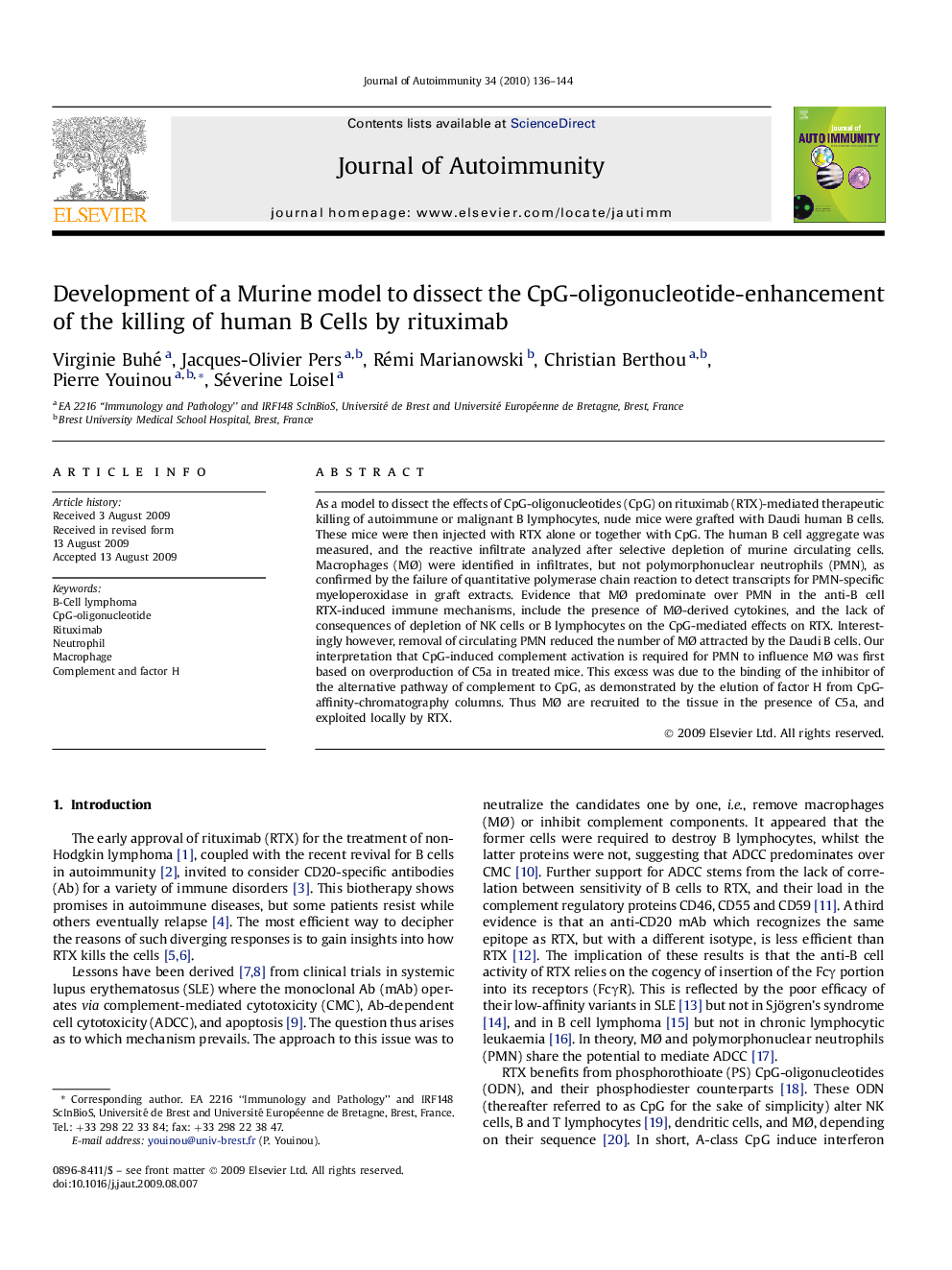| Article ID | Journal | Published Year | Pages | File Type |
|---|---|---|---|---|
| 3368158 | Journal of Autoimmunity | 2010 | 9 Pages |
As a model to dissect the effects of CpG-oligonucleotides (CpG) on rituximab (RTX)-mediated therapeutic killing of autoimmune or malignant B lymphocytes, nude mice were grafted with Daudi human B cells. These mice were then injected with RTX alone or together with CpG. The human B cell aggregate was measured, and the reactive infiltrate analyzed after selective depletion of murine circulating cells. Macrophages (MØ) were identified in infiltrates, but not polymorphonuclear neutrophils (PMN), as confirmed by the failure of quantitative polymerase chain reaction to detect transcripts for PMN-specific myeloperoxidase in graft extracts. Evidence that MØ predominate over PMN in the anti-B cell RTX-induced immune mechanisms, include the presence of MØ-derived cytokines, and the lack of consequences of depletion of NK cells or B lymphocytes on the CpG-mediated effects on RTX. Interestingly however, removal of circulating PMN reduced the number of MØ attracted by the Daudi B cells. Our interpretation that CpG-induced complement activation is required for PMN to influence MØ was first based on overproduction of C5a in treated mice. This excess was due to the binding of the inhibitor of the alternative pathway of complement to CpG, as demonstrated by the elution of factor H from CpG-affinity-chromatography columns. Thus MØ are recruited to the tissue in the presence of C5a, and exploited locally by RTX.
